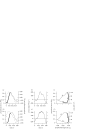The mechanical power requirements of avian flight
- PMID: 17507329
- PMCID: PMC2390671
- DOI: 10.1098/rsbl.2007.0182
The mechanical power requirements of avian flight
Abstract
A major goal of flight research has been to establish the relationship between the mechanical power requirements of flight and flight speed. This relationship is central to our understanding of the ecology and evolution of bird flight behaviour. Current approaches to determining flight power have relied on a variety of indirect measurements and led to a controversy over the shape of the power-speed relationship and a lack of quantitative agreement between the different techniques. We have used a new approach to determine flight power at a range of speeds based on the performance of the pectoralis muscles. As such, our measurements provide a unique dataset for comparison with other methods. Here we show that in budgerigars (Melopsittacus undulatus) and zebra finches (Taenopygia guttata) power is modulated with flight speed, resulting in U-shaped power-speed relationship. Our measured muscle powers agreed well with a range of powers predicted using an aerodynamic model. Assessing the accuracy of mechanical power calculated using such models is essential as they are the basis for determining flight efficiency when compared to measurements of flight metabolic rate and for predicting minimum power and maximum range speeds, key determinants of optimal flight behaviour in the field.
Figures


References
-
- Adams G.R, Duvoisin M.R, Dudley G.A. Magnetic resonance imaging and electromyography as indexes of muscle function. J. Appl. Physiol. 1992;73:1578–1583. - PubMed
-
- Askew G.N, Marsh R.L. The mechanical power output of the pectoralis muscle of the blue breasted quail (Coturnix chinensis): the in vivo length cycle and its implications for muscle performance. J. Exp. Biol. 2001;204:3587–3600. - PubMed
-
- Askew G.N, Marsh R.L, Ellington C.P. The mechanical power output of the flight muscles of the blue breasted quail (Cuturnix chinensis) during take-off. J. Exp. Biol. 2001;201:3601–3619. - PubMed
-
- Biewener A.A, Dial K.P, Goslow G.E. Pectoralis muscle force and power output during flight in the starling. J. Exp. Biol. 1992;164:1–18. doi:10.1016/S0958-1669(00)00204-4 - DOI
-
- Dial K.P, Biewener A.A, Tobalske B.W, Warrick D.R. Mechanical power output of bird flight. Nature. 1997;390:67–70. doi:10.1038/36330 - DOI
Publication types
MeSH terms
LinkOut - more resources
Full Text Sources
Research Materials
